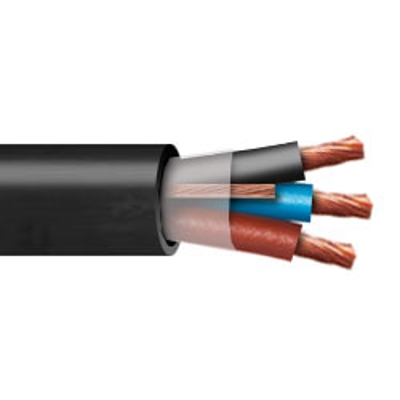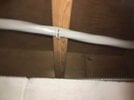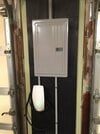Hi all,
I just learned of "tray cable." From my understanding, it appears to be an "anything" cable -- you can run it indoors, outdoors, in open air, bury it directly in the ground, run it in conduit, etc. For 6 gauge it supports 75 amps for dry locations and 65 amps for wet locations. This means it more than supports the wall connector.
For my installation, I have to run wire from the panel directly into the crawl space under the house. It will travel about 40 feet under the house to the front yard. Then the wire will exit into a front yard planter, go under a walkway via digging, go under the lawn, then emerge into a hollow brick light post where my wall connector will be mounted. This outdoor run will be another 40 feet. So this is 80 feet total: half in the crawlspace, half outdoors. For 80 feet the tray table would cost about $315 with taxes and shipping.
With tray cable, it sounds like I can just do the following? Run it through the crawlspace by directly affixing it to the floor joists, exit into the front yard planter, run it in that planter above ground (conduit and burying are optional here), then bury it for the rest of the run until it emerges under the brick post and connects directly to the wall charger? This seems too good to be true: no conduit, digging is only required for aesthetic purposes, and the wire supports max amperage. Of course I would love to be corrected and would definitely appreciate an informed opinion!
Before I discovered tray cable, my original plan was this: at Home Depot I purchased a 50 foot role of 6/2 Romex for the crawlspace ($154) and a 50 foot role of 6/3 UF-B to bury outdoors ($179). This was a total of $333 + tax, which costs more than the tray cable and only supports 55 amps. This setup would also require conduit where the UF-B cable goes into and out of the ground, which would cost more and require more labor. (And THHN in conduit would have been even more troublesome and expensive to install.)
And yes, my electrician is doing all of this, but I want to know my options before we come up with a plan.
I just learned of "tray cable." From my understanding, it appears to be an "anything" cable -- you can run it indoors, outdoors, in open air, bury it directly in the ground, run it in conduit, etc. For 6 gauge it supports 75 amps for dry locations and 65 amps for wet locations. This means it more than supports the wall connector.
For my installation, I have to run wire from the panel directly into the crawl space under the house. It will travel about 40 feet under the house to the front yard. Then the wire will exit into a front yard planter, go under a walkway via digging, go under the lawn, then emerge into a hollow brick light post where my wall connector will be mounted. This outdoor run will be another 40 feet. So this is 80 feet total: half in the crawlspace, half outdoors. For 80 feet the tray table would cost about $315 with taxes and shipping.
With tray cable, it sounds like I can just do the following? Run it through the crawlspace by directly affixing it to the floor joists, exit into the front yard planter, run it in that planter above ground (conduit and burying are optional here), then bury it for the rest of the run until it emerges under the brick post and connects directly to the wall charger? This seems too good to be true: no conduit, digging is only required for aesthetic purposes, and the wire supports max amperage. Of course I would love to be corrected and would definitely appreciate an informed opinion!
Before I discovered tray cable, my original plan was this: at Home Depot I purchased a 50 foot role of 6/2 Romex for the crawlspace ($154) and a 50 foot role of 6/3 UF-B to bury outdoors ($179). This was a total of $333 + tax, which costs more than the tray cable and only supports 55 amps. This setup would also require conduit where the UF-B cable goes into and out of the ground, which would cost more and require more labor. (And THHN in conduit would have been even more troublesome and expensive to install.)
And yes, my electrician is doing all of this, but I want to know my options before we come up with a plan.





